What lies beneath the waters at Selsey
It is hard not to appreciate the sight of blue sea on a warm summer day, whether it's sitting and watching the gentle waves lapping the shore, dipping your toes for a paddle or wading in for a swim.
It is perhaps easy however to overlook the busy and wonderful world below the surface, a world secret from the majority.
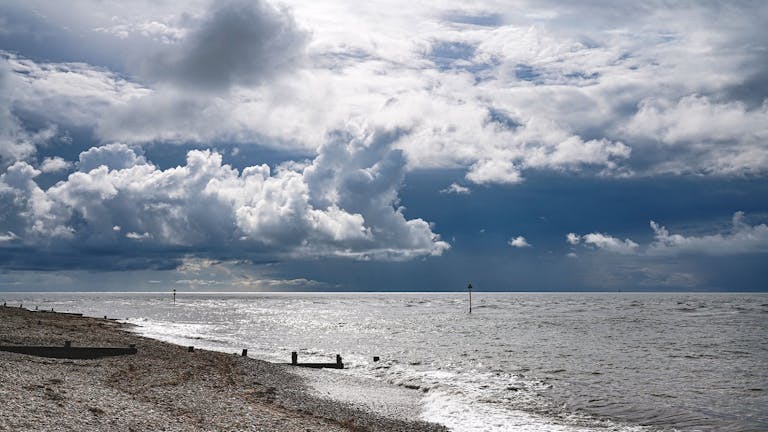
On land we are familiar with the four seasons: winter, spring, summer and autumn. These seasons are mirrored in the sea with temperate waters controlling the rate of growth of plant life and the activities of the species that live within. As the water warms up, life responds and the view beneath the surface changes. The underwater landscape seen in February will differ as much in May as it would on land, changing again throughout the seasons. The sea off the coast of Selsey is always full of life, fascinating to explore and always with something new to discover.
Unless you take part in snorkelling, diving or freediving, it is hard to image the life going on beneath the surface. Below is a small taster of what can be found by those that explore deeper.
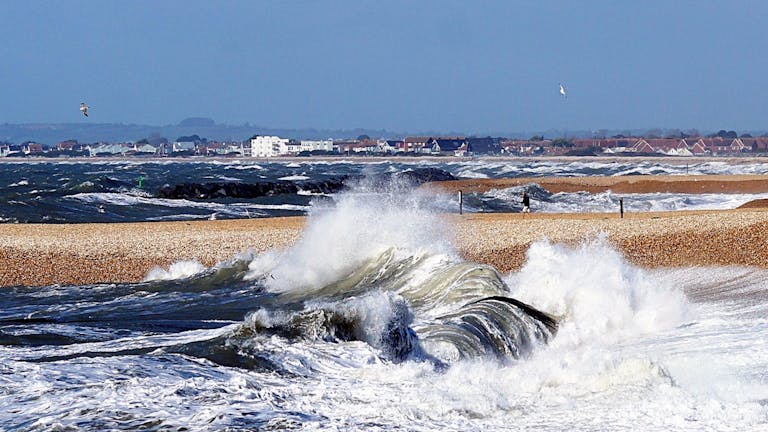
Winter
During the winter months, violent storms create large waves and deep underwater swells, churning the sea and clouding it with silt and sand. Fish have moved into deeper water to take shelter and crustaceans such as crab and lobster are in a state similar to hibernation where they stop feeding, move about very little and prefer to remain in their rocky or sandy burrows.
Towards the end of winter, once these storms have passed, the water colour changes, becoming bluer to reflect the brightening skies and clearer as the silt and sand settles. Below the waves, weed growth has not yet begun so that the early risers of the animal world have the space to themselves.

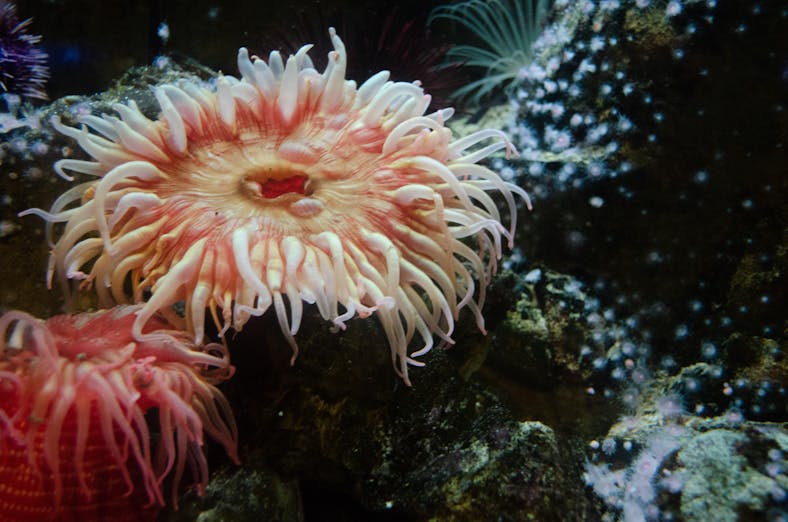
At first glance the sand looks barren but looking closer, Sand Mason worms become visible, poking out of the sand looking like miniature trees with no leaves, bits of small shell clinging to them. Hollow tubes emerge from the sand at regular intervals, these are the homes of the Fan worms. They feed by extending what look like a delicate feather duster to catch the particles in the water. Often fields of them stretching into the distance can be seen; super sensitive to changes in the water and ready to withdraw into the protection of their tube at the slightest disturbance.
Larger rocks and objects offer flashes of colour with Boring and Encrusting Sponges such as Cilona celata covering surfaces in yellow. Fish are scarce this early, but anemones, crabs and nudibranchs can be found. The Dahlia Anemone has an amazing range of colours, whilst the Snakelock Anemone moves about gently with the water. There are several species of crab at Selsey including small hermit crabs moving about their business, to red eyed velvet swimming crabs and small edible crabs tucked into their burrows and holes. Nudibranchs are the slugs of the sea, but very different to the slug you find in your garden, they are beautiful with delicate colours and patterns and coils of Nudibranch eggs lie like ribbons on surfaces.

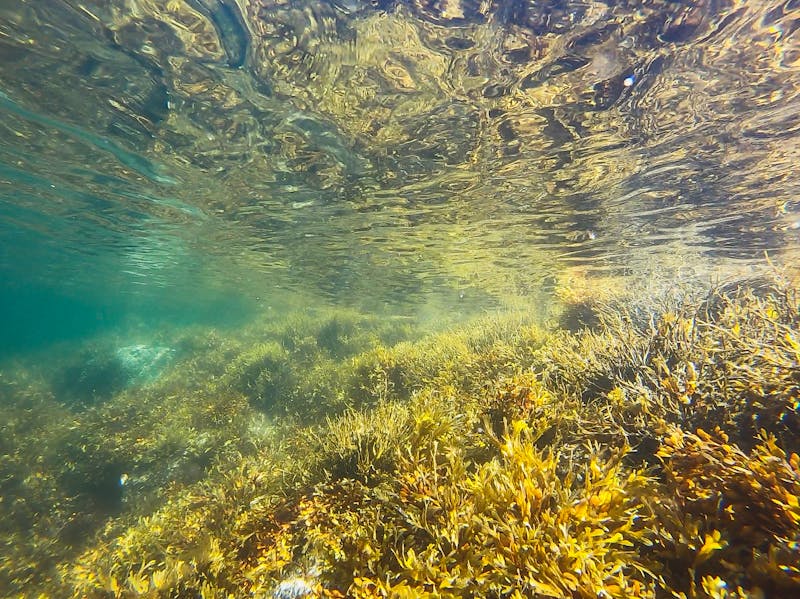
Spring
Spring brings an explosion of life on land and this is reflected in the underwater world but with a time delay. It takes a while for the sun to warm the water up but as it rises marine life is triggered by the changes in temperature. Food sources increase as weed responds and grows just like the trees and plants on land, whilst the spring plankton bloom fills the water with food. Fish come in to breed and it gets busy under the water.
This is an amazing time within the Mixon Hole, a deep underwater gully lying at the end of the Looe Channel connecting the Solent to the Eastern Channel. The Mixon Marker can be seen from the shore, to the right of the RNLI Station from East Beach. This marker sits on a shelf at about 6 metres but from here, a clay cliff wall drops to about 30 metres. The shelf gets covered in red weed, hydroids and bryozoans, which often bush like in nature offer places to tether eggs and shelter juvenile fish. The clay wall itself is full of holes with edible crabs gathering within and Snakelock anemones holding on, the further away from the sun they are the lighter in colour they become, fading from green with purple tips to white with a darker almost deep blue tip.
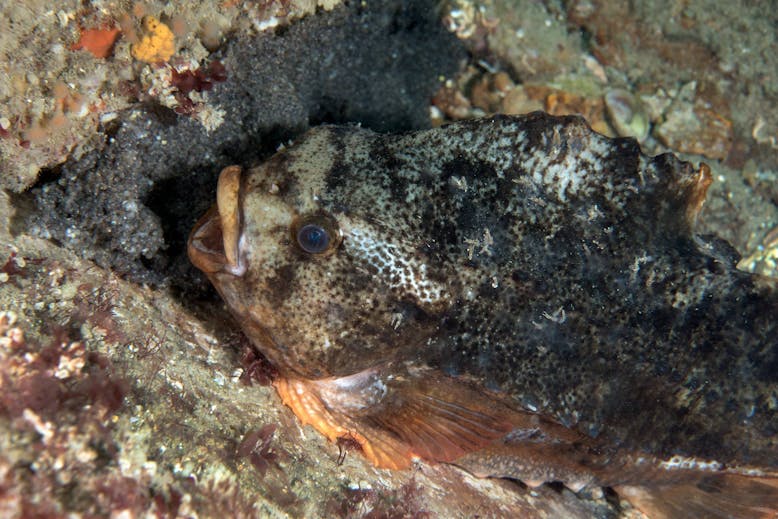
An early notable resident is the Lumpsucker, a depth loving fish that comes to shallow water to breed. Perhaps not the most beautiful fish in the sea, the Lumpsucker is fascinating in that it is the father who is the most dedicated in child rearing, staying with the eggs until they hatch, hovering over them expectantly and using his fins to fan water over the eggs to aerate them.
As the season progresses, life underwater gears up ready for mating. Male Wrasse spend their time building, creating a ball-shaped nest of seaweed in rock crevices or sedimentary areas, territorially guarding the entrance hole. Crabs huddle together, the males sitting on top of the females for protection as she has to moult before mating. Velvet Swimming crabs are also known as fighting crabs due to the male behaviour of standing up on their back legs, defending their mate. Cat sharks lie tails entwined with the current flowing over their gills.
Over the edge of the shelf, shoals of fish including Bream, Bass and Bib begin to gather and feed before spawning when the water reaches around 17°C (63°F). Closer to the shore, cuttlefish can be found on their own or in pairs as they mate and lay their egg clusters amongst the weed.
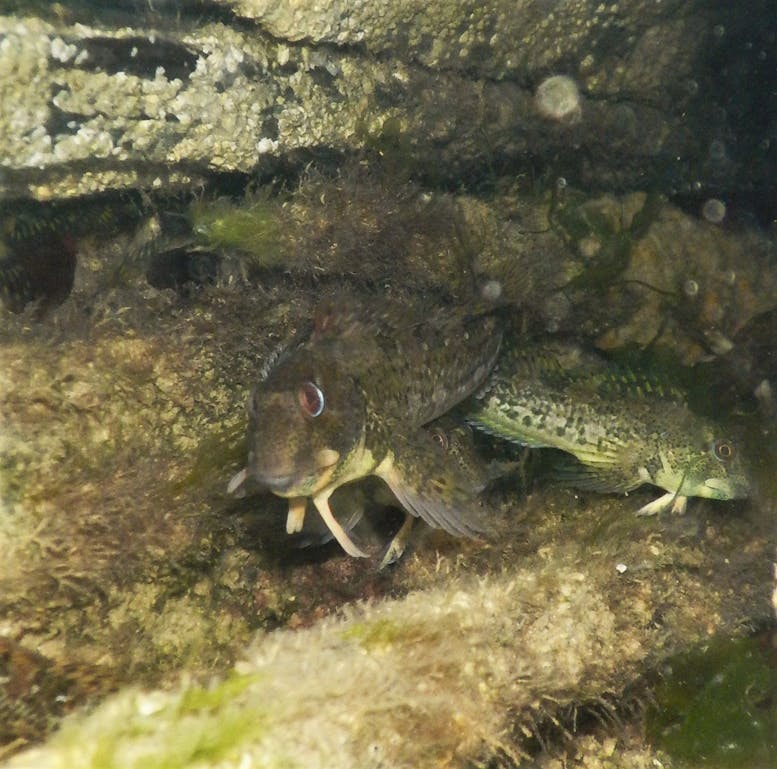
Summer
As summer arrives, the water teems with life, moving not just with wind and tide but with the amount of small and young life. Sandy areas of the seabed are alight with gobies and blennies darting and playing among the weeds while delicate long-legged spider crabs hide amongst bootlace weed. On a sunny day, you can see the amount of weed in its abundance by the darker patches in an otherwise blue sea.
Shore crabs and prawns make their home on the sides of groynes, within the barnacles and tucked into holes while Pipefish lie in shallow water, half in and half out of small patches of weed. These are a relative of the sea horse and look like a stretched-out version, a long thin body topped by a head and snout.
Wrasse shelter in the weed swimming around the end of the groynes while entire families of Shannies move inside hollowed out areas. Also known as the Common Blenny the Shanny is a small , elongated fish with a large head and big eyes, they are also common in rock pools or very shallow water and the can even survive out of water at very low tide, although they will jump back in like a frog if disturbed.

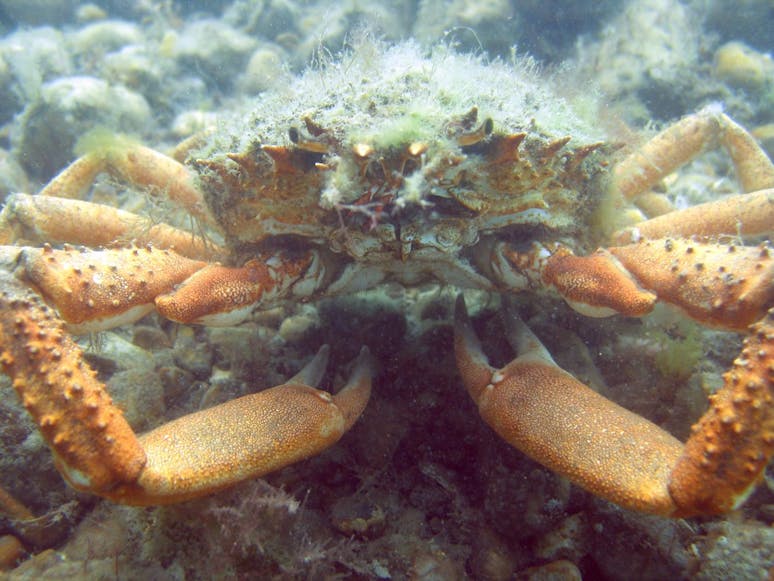
Autumn
As the weather begins to turn once again, trees lose their leaves and land animals gather the last of the available food ready for migration or hibernation, so the world underwater changes.
Fish prevalent in the spring and summer move on to deeper waters before the winter storms arrive and crustaceans begin to slow before their wintery sleep.
Many sea weeds will have been consumed as food by the huge variety of life teeming in the summer months and will not begin to bloom before spring comes once again and the cycle starts all over again. Life slows and sleeps.
There are lots of ways to get closer and make your own discoveries in the waters off Selsey by snorkelling or diving, but if you prefer staying on land, hopefully when you now look out to sea you have an insight into the world beneath the surface.
Many thanks to Anya Frampton, Selsey's resident SSI Marine Ecology Instructor for this piece.





